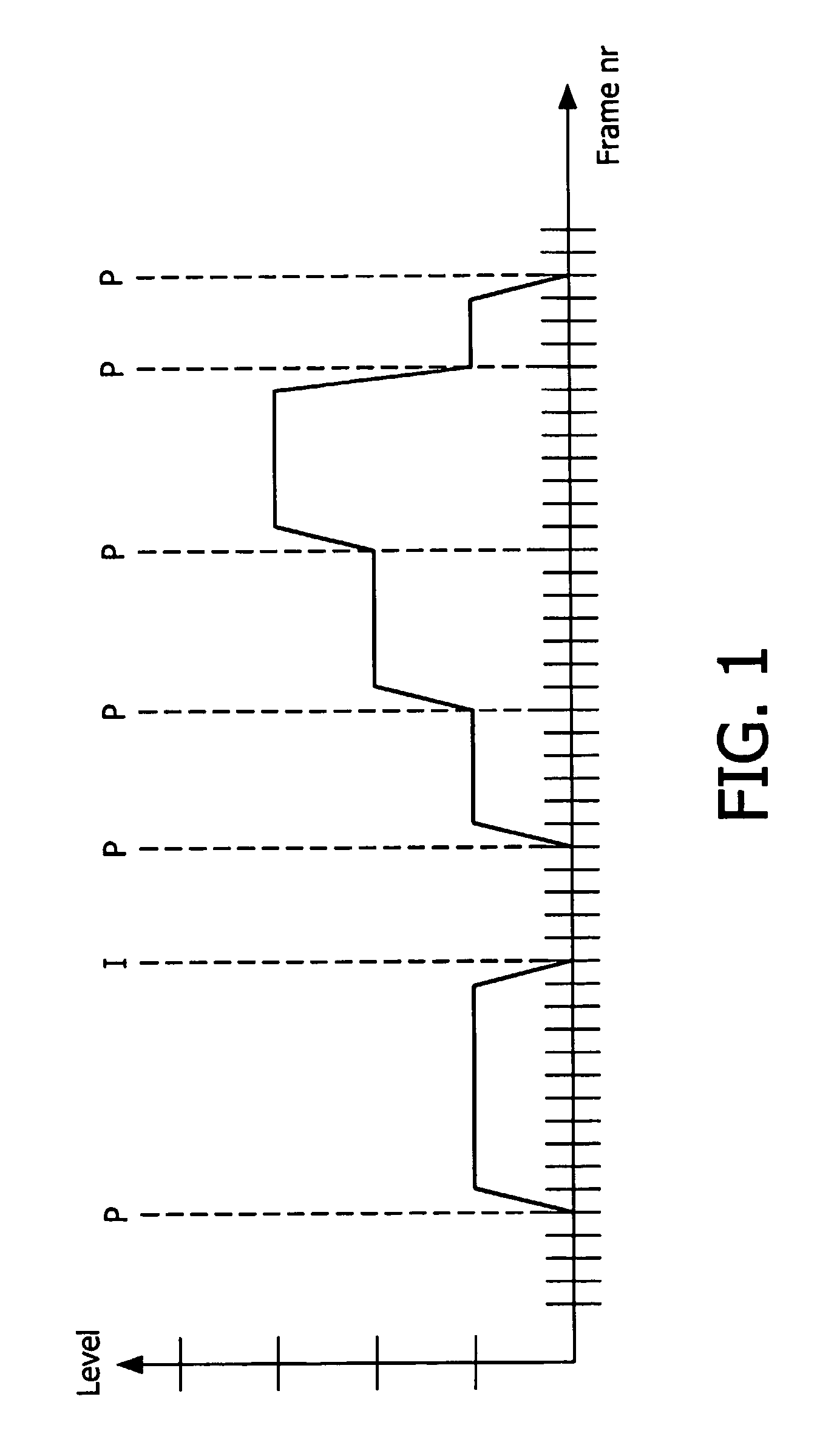Video encoding method and device
a video and coding technology, applied in the field of video coding methods, can solve the problems of low bit rate, sequences that do not profit from such techniques, and fixed gop structures like the commonly used (12, 4)-gop may be inefficient for coding video sequences, so as to reduce the coding cost more noticeably
- Summary
- Abstract
- Description
- Claims
- Application Information
AI Technical Summary
Benefits of technology
Problems solved by technology
Method used
Image
Examples
Embodiment Construction
[0020] The document cited above describes a method for finding which frames in the input sequence can serve as reference frames, in order to reduce the coding cost. The principle of this method is to measure the strength of content change on the basis of some simple rules, such as listed below and illustrated in FIG. 1, where the horizontal axis corresponds to the number of the concerned frame and the vertical axis to the level of the strength of content change: the measured strength of content change is quantized to levels (for instance five levels, said number being however not a limitation), and I-frames are inserted at the beginning of a sequence of frames having content-change strength (CCS) of level 0, while P-frames are inserted before a level increase of CCS occurs or after a level decrease of CCS occurs. The measure may be for instance a simple block classification that detects horizontal and vertical edges, or other types of measures based on luminance, motion vectors, etc...
PUM
 Login to View More
Login to View More Abstract
Description
Claims
Application Information
 Login to View More
Login to View More - R&D
- Intellectual Property
- Life Sciences
- Materials
- Tech Scout
- Unparalleled Data Quality
- Higher Quality Content
- 60% Fewer Hallucinations
Browse by: Latest US Patents, China's latest patents, Technical Efficacy Thesaurus, Application Domain, Technology Topic, Popular Technical Reports.
© 2025 PatSnap. All rights reserved.Legal|Privacy policy|Modern Slavery Act Transparency Statement|Sitemap|About US| Contact US: help@patsnap.com



